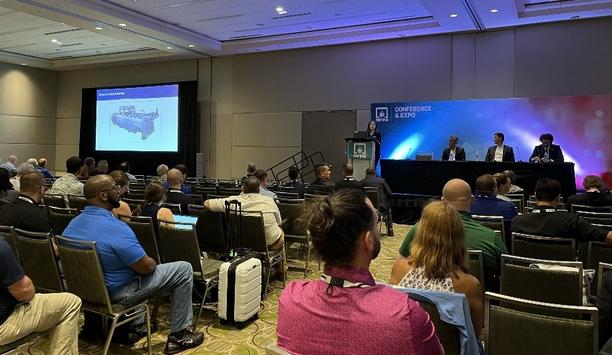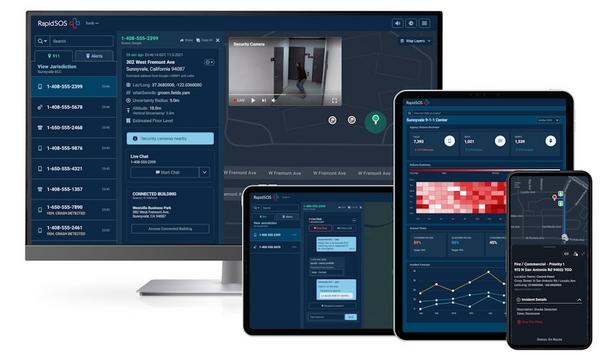Drones are an important new tool for the fire service and have already proven their ability to save lives. Willingness to embrace drones (or unmanned aerial vehicles [UAVs]) for fire applications varies widely by department, and it’s not just larger departments that are making the investment. Some smaller departments are investing in drones in a big way, even as some larger departments are reticent.
Firefighting Drone Programs
Departments may start with a small drone just to “try it out” and to prove its usefulness to upper management. Other departments start with a budgeted amount for their drone program and go from there. According to Matt Sloane, CEO of Skyfire Consulting, the average drone program is around $35,000 to $40,000, which provides drones, thermal imaging, cameras, operation costs – all of it. Drone programs are not covered by Assistance to Firefighters (AFG) grants, however. As little as $1,500 can buy an “eye in the sky” drone (without thermal functionality).
Sloane says the top question he used to get asked by potential customers was “How do I use this thing?” Now the top question is “How do I sell it to my chief?” Sloane has done hundreds of demonstrations of drone technology to fire departments and has never heard anyone say “I don’t see how that would be useful.” In fact, cost justification of drones is easy if you compare the cost with operating a helicopter, the closest alternative to provide comparable information. Sloane says implementing a drone program is equivalent in cost to “between 40 and 50 hours” of operating a helicopter.
“There is still a misperception that drones are toys,” says Sloane. “But people’s lives are being saved so we’re past that stage.” He compares the reception to drones in the fire service to initial resistance to the use of thermal cameras. “Now everyone has one,” he says.
 |
| A drone can provide a 360-degree view of a single-family house fire within seconds |
Effectiveness Of Drones In Fire Applications
Education is an important element in spreading the word about the effectiveness of drones for fire applications, says Sloane. A fire department might choose to implement a drone program after they experience a situation in which a drone would have been a useful asset. Drones can be helpful for hazardous materials protection, search-and-rescue, and wildfire applications.
The value of a drone boils down to providing better information for decision-making. In the case of a hazardous material spill, for example, a drone can provide information much faster than it would take personnel to don hazmat garments to approach an area safely; there is also no risk to life.
A drone can provide a 360-degree view of a single-family house fire within seconds. A thermal imaging camera mounted on a drone can provide instant feedback on hot spots and where the fire is moving. Some drones can drop payloads; for example, they can drop a life jacket to a swimmer or a radio to someone who is trapped. Drones can also be helpful in training, providing high-level views to document activity for evaluation after the fact.
Communication with a drone is localized between the drone and the remote control. A smart phone or tablet can be plugged into the drone’s remote to communicate images across the Internet. The remote’s HDMI output also allows a drone’s image to be displayed on a TV monitor.
How To Start A Drone Program
Skyfire Consulting provides a “one-stop shop” for fire and police departments seeking to start a drone program. The company helps with choosing the right equipment, performs on-site training, guides the department to obtain the needed Federal Aviation Administration (FAA) authorizations, and aids with developing standard operating procedures (SOPs) and policies. Implementation of the average drone program takes three to six months.
FAA authorization to fly drones comes in two varieties. Drones can be flown under Part 107 rules for commercial use and for video production. The authorization merely requires passing a 60-question written test with a 70 percent score. The certification is good for two years and allows an operator to fly drones up to 400 feet in line-of-site, and within Class G (uncontrolled) air space. A downside is that the permit assigns liability to the operator (and a waiver may or may not be granted).
 |
| Departments are buying a variety of drones in combinations of large and small |
Obtaining A Certificate Of Authorization
The second variety of FAA authorization is a COA (Certificate of Authorization), which assigns liability to the department operating the drones. It also allows the department to self-certify their operators, perform training, and operate in some controlled air space if a waiver is granted. Earning a COA is more complicated, but offers benefits, including the ability to train new operators in a department that has turnover. Line-of-sight operation is a requirement for flying any drones. Line-of-sight is typically three-fourths of a mile, and drones are equipped with bright lights and anti-collision lights (visible for three nautical miles).
Sloane says the FAA is generally very positive about public safety uses of drones and works with departments to get their drone programs in place.
Choosing Between Small And Large Drones
A popular drone manufacturer is DJI Technology, which has a dominant share of the consumer drone market. A popular model is the DJI Phantom drones, which provide 35 minutes of flight time and a good camera. For other sensors, something larger is needed. Departments are buying a variety of drones in combinations of large and small. Small drones perform tactical missions and can fly through a window, while larger drones can be equipped with thermal and/or zoom cameras. The price tags on individual drones range from $500 to $30,000 or more.
 | Larry AndersonEditor |



































